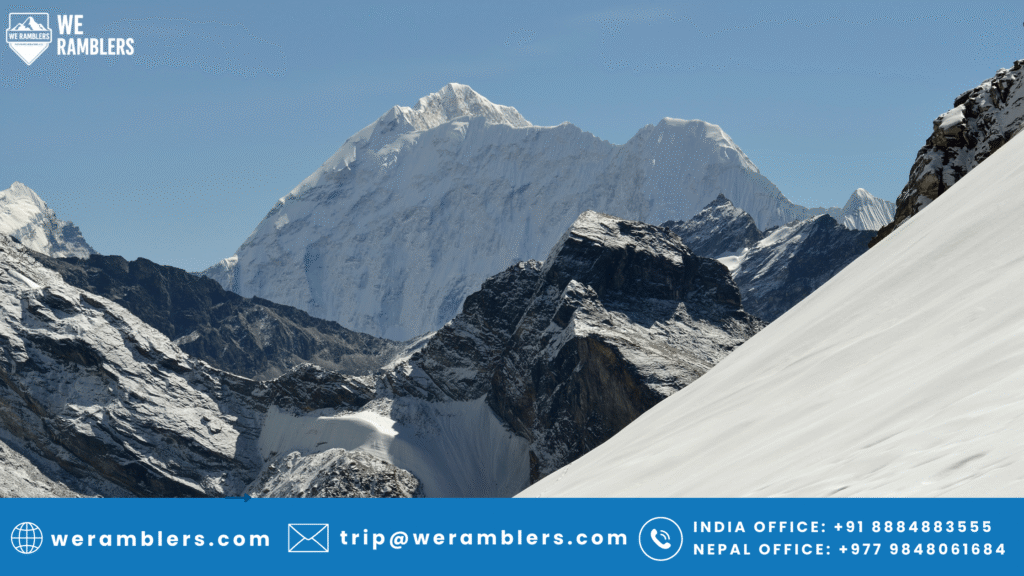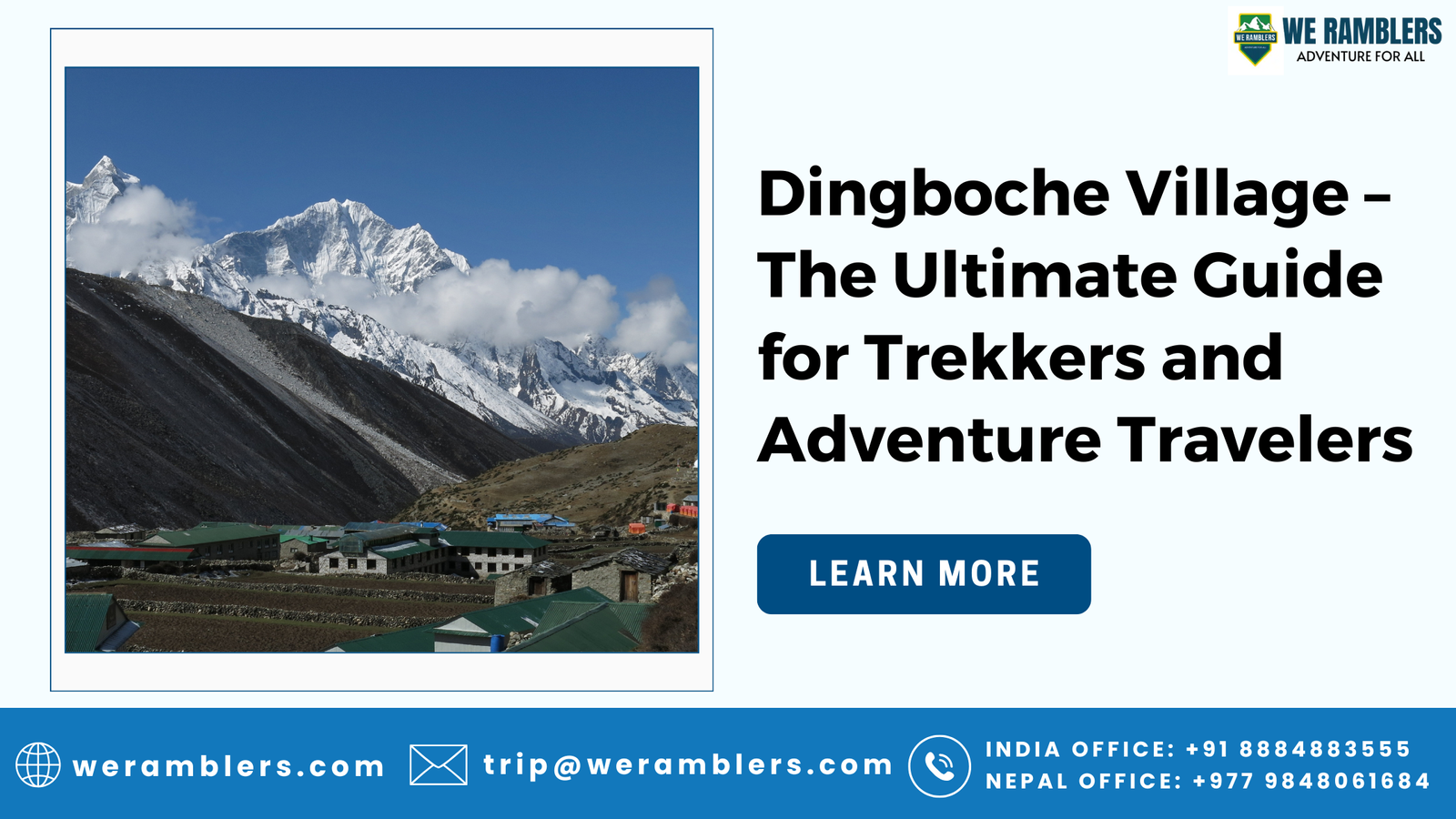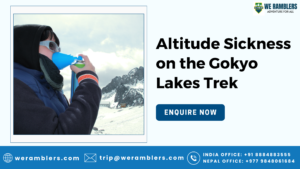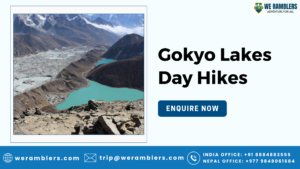Dingboche Village – The Ultimate Guide for Trekkers and Adventure Travelers
Nestled deep in the Khumbu region of Sagarmatha National Park, Dingboche Village is a captivating Himalayan settlement that has become a vital stop for trekkers on the Everest Base Camp trek. Known as the “summer valley” of the Khumbu, this high-altitude village lies at 4,410 meters above sea level in the heart of the Imja Valley.
Surrounded by the soaring peaks of Ama Dablam, Lhotse, and Island Peak, Dingboche Nepal offers breathtaking views, rich Sherpa culture, and a serene environment perfect for acclimatization. The village is often a key resting point for trekkers before they ascend further towards Lobuche and Everest Base Camp or branch off to Island Peak Base Camp.
Beyond its beauty, Dingboche trekking offers visitors an authentic Himalayan experience, with traditional stone houses, potato fields, and stunning mountain backdrops that seem to change with the light of day.
Geography & Location of The Dingboche Village
Dingboche Village is strategically located in the Imja Valley, east of Tengboche and south of Lobuche, making it a natural acclimatization point on the Everest route. It is part of Sagarmatha National Park, a UNESCO World Heritage Site that preserves not only the world’s highest peaks but also unique alpine ecosystems and Sherpa heritage.
The village sits in a wide valley, offering panoramic views of Ama Dablam, Lhotse, Makalu, and Island Peak. The Imja Khola River flows nearby, its glacial waters feeding the terraced potato fields that define the village’s agricultural life.
From Dingboche, trekkers can easily access the routes to Chhukung Valley, Island Peak Base Camp, and high passes such as Kongma La. This prime location makes it one of the most photographed stops on the Everest Base Camp trek itinerary.
History & Cultural Significance
The origins of Dingboche Nepal trace back to early Sherpa settlers, who migrated from Tibet centuries ago. Its fertile valley became a seasonal farming ground, particularly for potatoes and barley, thanks to its relatively sheltered position in the Khumbu.
Traditionally, the village served as a summer settlement due to heavy snowfall in winter. Over time, as trekking and mountaineering in Nepal expanded, Dingboche evolved into a key stopover for expeditions heading towards Everest Base Camp, Lhotse, and Island Peak.
The cultural fabric here is deeply rooted in Tibetan Buddhism. Prayer flags flutter across rooftops, and mani walls carved with sacred mantras line the trekking paths, blessing travelers as they pass.
Dingboche Village Altitude & Acclimatization
At 4,410 meters, Dingboche is a critical acclimatization stop for trekkers. Most Everest Base Camp trek itineraries include at least one full acclimatization day in Dingboche to help prevent altitude sickness.
One of the most popular acclimatization hikes from here is the trek to Nangkartshang Peak (around 5,100 m), which rewards hikers with 360° views of Ama Dablam, Makalu, and Island Peak. Shorter walks around the valley, including to Chhukung, are also beneficial for gradual altitude adjustment.
To ensure safety, you must accompany a certified guide when trekking in Nepal. Guides not only enhance safety but also share deep insights into the terrain, culture, and high-altitude survival.
Climate & Best Time to Visit Dingboche
Dingboche weather can be extreme due to its high altitude.
- Spring (March–May): Mild days, clear skies, and blooming rhododendrons.
- Autumn (September–November): The most popular trekking season with crisp air and outstanding visibility.
- Winter (December–February): Cold, with heavy snow possible, but fewer crowds.
- Monsoon (June–August): Wet conditions and cloud cover limit views.
The best time to visit Dingboche Nepal is during spring or autumn, when weather is stable, temperatures are manageable, and mountain views are at their sharpest. Regardless of season, a certified guide is essential for navigating Himalayan terrain safely.
Accommodation in Dingboche Village
Despite its remote location, Dingboche village accommodation options are well-developed for trekkers. The village features comfortable tea houses and Himalayan lodges offering warm rooms, hearty meals, and cozy dining areas heated by yak-dung stoves.
Facilities typically include Wi-Fi (for a fee), solar-heated showers, charging stations for electronics, and a range of food options from Nepali dal bhat to pasta and soups. Some lodges also offer fresh bakery items, a welcome treat for tired trekkers.
Popular stays include lodges with panoramic dining room windows facing Ama Dablam, making every meal a memorable experience. Booking ahead during peak trekking months is recommended.
Things to Do in Dingboche
While Dingboche is primarily an acclimatization stop, it offers plenty to explore:
- Acclimatization hikes to Nangkartshang Peak for epic mountain panoramas.
- A trek to Chhukung Valley and Island Peak Base Camp, often used by climbers for preparation.
- Strolling through potato fields and exploring local stone-walled paths.
- Photography sessions with Ama Dablam’s iconic peak dominating the skyline.
These activities not only aid in acclimatization but also let you immerse yourself in the village’s peaceful Himalayan charm.

How to Reach Dingboche Village
The journey to Dingboche Nepal begins with a scenic flight from Kathmandu or Ramechhap to Lukla. From there, trekkers follow the trail through Phakding, Namche Bazaar, and Tengboche before ascending to Dingboche.
The trek from Tengboche to Dingboche usually takes 5–6 hours, passing through Pangboche, the highest permanent Sherpa settlement in the Khumbu.
As per Nepal’s trekking regulations, you must accompany a certified guide throughout the journey, ensuring both safety and a richer travel experience.
Trekking Routes from Dingboche
From Dingboche, trekkers can take multiple routes:
- Continue to Lobuche and onwards to Everest Base Camp.
- Head east to Island Peak Base Camp for a climbing adventure.
- Loop towards Pangboche and Phortse for scenic, less-crowded trails.
The village also serves as a base for the Three Passes Trek, with access to the high-altitude Kongma La Pass.
We Ramblers — Your Trusted Trekking Partner
We Ramblers is a trusted adventure travel company specializing in guided treks across Nepal, including the world-famous Everest Base Camp trek, Island Peak expeditions, Mardi Himal, and Langtang Valley adventures.
With a deep commitment to sustainable tourism, our team ensures that every trek benefits local communities while minimizing environmental impact. We provide experienced, certified guides who prioritize safety, cultural immersion, and personalized itineraries for every traveler.
Whether you’re trekking to Dingboche Village, crossing high Himalayan passes, or summiting trekking peaks, We Ramblers offers well-planned packages that balance adventure with comfort. Our itineraries include proper acclimatization days, reliable accommodations, and detailed pre-trek support, ensuring a safe and unforgettable Himalayan journey.
Frequently Asked Questions (FAQs) About Dingboche Village
1. What is the altitude of Dingboche?
Dingboche Village sits at 4,410 meters (14,470 feet) above sea level in the Imja Valley, making it an important acclimatization stop for trekkers heading towards Everest Base Camp.
2. How many days do you stay in Dingboche during EBC trek?
Most itineraries include at least one full day in Dingboche for acclimatization, often paired with a side hike to Nangkartshang Peak or Chhukung Valley.
3. Is Dingboche colder than Namche Bazaar?
Yes, Dingboche is colder than Namche Bazaar due to its higher altitude. Nights can be especially chilly, even in peak trekking seasons.
4. What can you see from Dingboche?
The village offers spectacular views of Ama Dablam, Lhotse, Makalu, and Island Peak, as well as the surrounding Imja Valley and terraced fields.
5. How far is Dingboche from Everest Base Camp?
Dingboche is approximately 20 km from Everest Base Camp, typically a two-day trek via Lobuche and Gorak Shep. Contact us now for the full EBC trek itinerary.





